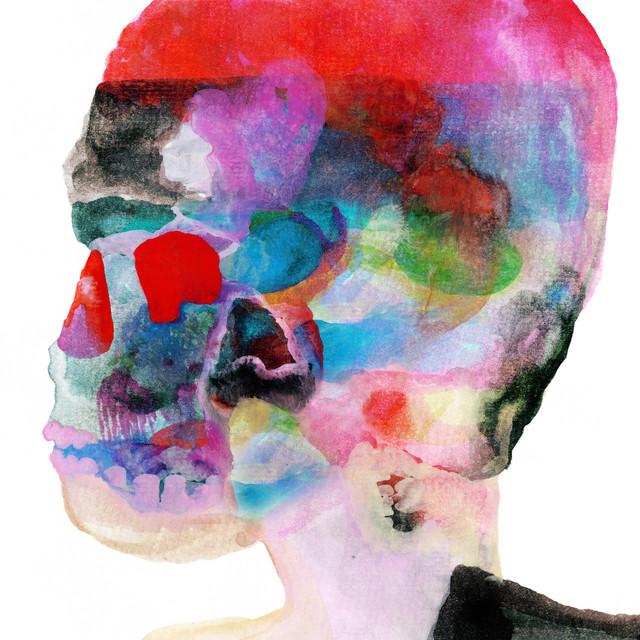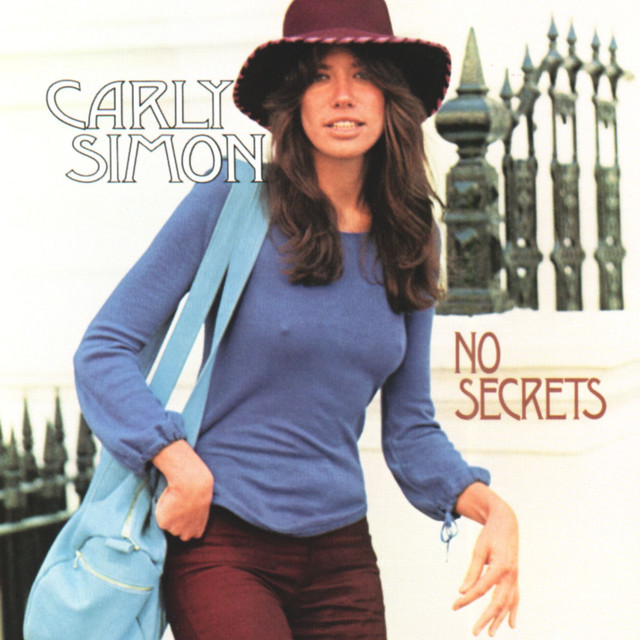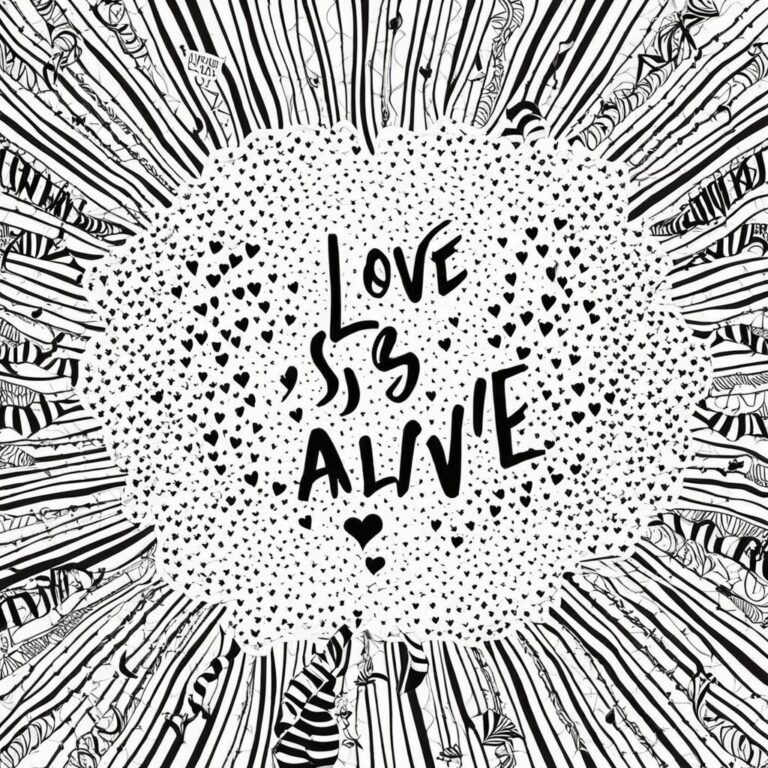Sad Sad City
Sad Sad City by Ghostland Observatory Stats
Artist: Ghostland Observatory
Song Title: Sad Sad City
Genre: Electronic
Release Date: 2006
Album: Paparazzi Lightning
- Sad Sad City by Ghostland Observatory: Composition Outline
- Key and Pitch
- Instruments and Effects
- Instrument Main Chords
- Prevalent Notes
- Vocals
- Phonetic Breakdown
- Harmonization
- Keys to Playing/Singing
- Composition Breakdown of “Sad Sad City”
- Lyrical Structure and Subject
- AABB Rhyme Pattern
- Key of the Lyrics
- Singing Rhythmic Patterns
- Storytelling Aspect
- Story Explanation
- Sad Sad City by Ghostland Observatory (2006)
- Chord Progression for “Sad Sad City”
- Piano Chord Breakdown
- Guitar Chord Breakdown
- Special Playing Instructions
- Finger Placement for Piano
- Finger Placement for Guitar
- Expert Advice
- Genre Overview
- Founding of Electro-Rock
- Ghostland Observatory’s Impact
- Contemporaries
- Similar Songs
- Genre Comparisons
- Unrelated Genre Comparison
- Encoded Clue
- Analysis of “Sad Sad City” by Ghostland Observatory
- Overall Composition
- Conclusion
- Recording Quality/Production
- Techniques Used in Recording
- Effects Processing
- Special Equipment
- Creators of “Sad Sad City”
- Deconstructing the Melancholy of Urban Isolation
- Popular Links about Sad Sad City by Ghostland Observatory

Sad Sad City by Ghostland Observatory: Composition Outline
Sad Sad City is a piece of electro-rock music released by Ghostland Observatory on their third album, ‘Paparazzi Lightning’. Structured below is a minimalist exploration of this composition:
Introduction
The song begins swiftly, introducing the listeners to electro-disco rhythms in its early seconds. There’s a great blend of synthesizers and drum machines, setting the base for an energetic track.
Vocals and Lyrics
The lyrics form a vibrant part of the composition, echoing a consistent theme of unfulfilled expectations in a city. The vocals are stark, distinct, and laced with a sense of urgency and isolation. The repetition of the line “I need your love” instills a sense of longing in the listener.
Chorus
The chorus of ‘Sad Sad City’ is indisputably catchy, reinforced by its repetitive nature. The melody is joyous and uplifting, despite the melancholic lyrics, making for an interesting contrast.
Instrumentation
Throughout the track, the instrumental work is remarkable. The intertwining of the electronic beats, bassline, and falsetto vocals present a melody that is both buoyant and introspective at once.
Conclusion
The song progressively builds on its initial energy, ending on a high note that leaves the listener captivated. The potent mix of energetic electro rhythms and expressive lyrics make ‘Sad Sad City’ an enduring track in Ghostland Observatory’s repertoire.
Key and Pitch
The song “Sad Sad City” by Ghostland Observatory is played in the key of E minor.
Instruments and Effects
The song features electronic synthesizers, drums, guitar, and vocals.
Main Instrument: Synthesizer – played with a pulsating, rhythmic style.
The use of synthesizers is unique; they drive the melody with energetic arpeggios.
Instrument Main Chords
Wub-duh-wub, doo-doo-doo-doo
Chuh-chuh-chuh, wah-wah-wah
Prevalent Notes
Notes: E, G, A, B – played staccato with a driving intensity.
Vocals
Soulful and raw, they cut through the synth waves.
Vocals are like a lighthouse beam, piercing through a synth fog.
Phonetic Breakdown
“Sad sad city”: sahd sahd sih-tee
Harmonization
When the vocals and the synths merge, it feels like electricity meeting skin.
Keys to Playing/Singing
- Capture the energy of the synth rhythm.
- Match the soulful intensity in the vocals.
- Focus on dynamic contrasts between verses and chorus.
The neon lights of the city flickered erratically, casting an uneven glow over the cracked pavement. Jake leaned against the graffitied brick wall, the distant hum of synths echoing in his ears. His leather jacket offered little protection against the chill, but the pulsing rhythm kept him warm, a heartbeat that matched the erratic energy of this sad, sad city. He looked up, eyes tracing the skyline punctuated by dizzying skyscrapers.
Across the street, a young woman sat on the hood of a dusty old car, her eyes hidden behind round sunglasses, despite the moonlit hour. She raised a cigarette to her lips, exhaling smoke like a specter, a defiant smile playing on her lips. They exchanged a brief, unspoken connection that resonated as deeply as the bass line vibrating through the air. In that singular moment, surrounded by chaos and electric loneliness, they shared a silent pact of defiance against the hollow night.
Composition Breakdown of “Sad Sad City”
The song “Sad Sad City” is characterized by its distinctive blend of funk, rock, and electronic elements. Here’s a breakdown:
Samples and Loops
No direct samples are used. The tune is relatively original in its sound, though it draws inspiration from late 1970s and early 1980s music.
- Drum Loop: Consistent driving beat. Influenced by disco-era rhythms. Provides energy throughout.
- Bass Line: Pulsating, repetitive groove. Simple yet effective. Integral to the hypnotic feel.
- Guitar Riff: Funky and rhythmic. Groove-oriented. Key to the song’s character.
- Synthesizer: Layered electronic textures. Adds a modern touch. Contributes to the atmospheric vibe.
- Vocals: Soulful and emotive. Melodic line is catchy and complements the instrumental backing.
Overall Originality
The composition feels fresh yet familiar. It doesn’t copy but rather pays homage to past genres while creating something new.

Lyrical Structure and Subject
The lyrics follow a structured pattern and convey themes of melancholy and disconnection.
AABB Rhyme Pattern
The AABB rhyme scheme means every two lines rhyme with each other, creating a rhythmic and cohesive feel.
Key of the Lyrics
The song is typically sung in a minor key, which adds to its somber mood.
Singing Rhythmic Patterns
Rhythmic patterns are steady, often syncopated, giving an emotional push to the delivery.
Storytelling Aspect
Yes, the lyrics tell a story.
Story Explanation
The song narrates feelings of isolation and sadness in a city that reflects those emotions. It portrays a sense of longing and unfulfilled expectations, capturing the struggles of finding connection in a desolate environment.
Sad Sad City by Ghostland Observatory (2006)
Verse 1: Narrator is searching for truth in a city filled with solitude and desperation. Notes: Introduces the setting.
Chorus: Emphasizes the search for someone who understands in the bustling but lonely city.
Verse 2: Discusses the journey, both physical and spiritual, seeking signs and love. Notes: Expands on the internal and external search.
Chorus: Repeats the longing for connection and understanding amidst urban isolation.
Bridge: A reflection on the relentless passage of time and the struggle to find purpose. Notes: Adds depth to the theme of search.
Chorus/Outro: Closes with a repeated plea for companionship and understanding, highlighting the ongoing nature of the narrator’s quest.

Chord Progression for “Sad Sad City”
The main chords used in “Sad Sad City” are:
- Am
- G
- C
- F
Piano Chord Breakdown
For piano:
- Am: A, C, E
- G: G, B, D
- C: C, E, G
- F: F, A, C
Guitar Chord Breakdown
For guitar:
- Am: 032010
- G: 320003
- C: X32010
- F: 133211
Special Playing Instructions
Use a steady strumming pattern on guitar. Keep it simple—downstrokes work well.
Maintain a moderate tempo. This song has a “groove” feel.
Finger Placement for Piano
- Am: 1 (A), 3 (C), 5 (E)
- G: 1 (G), 3 (B), 5 (D)
- C: 1 (C), 3 (E), 5 (G)
- F: 1 (F), 3 (A), 5 (C)
Finger Placement for Guitar
Ensure fretting is clean. Use the following finger placements:
- Am: Use index finger for 1st fret on B string, middle on 2nd fret of D string, and ring on 2nd fret of G string.
- G: Index on 2nd fret A string, middle on 3rd fret E string, ring on 3rd fret B string, pinky on 3rd fret high E string.
- C: Similar to G, but lift the 2nd finger to play open D string.
- F: Barre all strings with index finger at the 1st fret, ring on 3rd fret A string, pinky on 3rd fret D string.
Expert Advice
Practice transitioning between chords smoothly. Pay attention to timing. Use a metronome for consistency.
Listen to the song to match your playing style.
Genre Overview
Sad Sad City by Ghostland Observatory is primarily classified as electro-rock. This genre fuses electronic music with rock elements, creating a unique soundscape that blends synthetic beats with live instrumentation.
Founding of Electro-Rock
Electro-rock emerged in the late 1990s and early 2000s, influenced by bands like The Prodigy and Daft Punk. It combines electronic music’s rhythmic precision with rock’s raw energy. The genre gained traction as technology advanced, allowing artists to experiment more freely.
Ghostland Observatory’s Impact
Ghostland Observatory contributed significantly to the evolution of electro-rock. Their energetic performances and innovative sound helped popularize the genre. They integrated live elements into electronic setups, inspiring other artists to follow suit.
Contemporaries
Similar artists from the same era include Justice and LCD Soundsystem. Both share a penchant for blending electronic beats with rock influences. Justice leans towards a heavier, more distorted sound, while LCD Soundsystem focuses on a blend of punk and dance elements.
Similar Songs
- “D.A.N.C.E.” by Justice: This track features strong electronic rhythms and a catchy hook. It compares to “Sad Sad City” in energy and groove but leans more towards disco influences.
- “Dance Yrself Clean” by LCD Soundsystem: This song shifts from subdued to an explosive chorus. It shares introspective lyrics with “Sad Sad City” but has a more prominent indie rock feel.
Genre Comparisons
Compared to indie rock, electro-rock emphasizes electronic production over traditional rock instruments. In contrast to pop, electro-rock tends to be more experimental and layered.
Unrelated Genre Comparison
When comparing “Sad Sad City” to a track like “Shape of You” by Ed Sheeran, the differences are stark. “Shape of You” features acoustic elements and a straightforward pop structure, relying on melody rather than complex layering. In contrast, “Sad Sad City” thrives on rhythm and texture, showcasing an experimental edge.
Encoded Clue
Vortex of fractals, neon whispers, a dirge for the distraught; echoes in the twilight form celestial prisms. Quantum dreams spectate as the desolate dance.
Analysis of “Sad Sad City” by Ghostland Observatory
Tone: The tone of the song is a mix of melancholy and vibrant energy. It captures feelings of sadness but also has an uplifting beat that contrasts with the lyrics. The overall mood is reflective, with a sense of longing while still being danceable.
Tempo:
The tempo is moderately fast. It keeps the energy high and creates a sense of urgency. The beat drives the song forward, making listeners want to move. Despite the sad theme, the tempo encourages an upbeat response.
Melody:
The melody is catchy and repetitive. It sticks in your mind but also shows a range of emotional depth. The combination of higher notes in the verses and the chorus creates a contrast that helps emphasize the lyrics’ feelings. The melody complements the rhythm well.
Rhythm:
The rhythm is dynamic and layered. It includes a steady base that provides a foundation for other elements. Different instruments introduce variation and complexity. The rhythm maintains interest and keeps listeners engaged throughout the song.
Harmony:
The harmony uses rich and full chords. There is a blend of electronic and traditional sounds. This mixture adds depth to the overall sound. The harmonies support the melody without overpowering it. They create an atmospheric feel, enhancing the emotional resonance of the song.
Overall Composition
The song balances sadness with energy. The production is polished, giving it a modern feel. Ghostland Observatory uses both electronic elements and more organic sounds to create a unique atmosphere. The song makes listeners feel while remaining enjoyable to dance to.
Conclusion
In summary, “Sad Sad City” presents a complex interplay of tone, tempo, melody, rhythm, and harmony. Each element works together to convey a meaningful experience. The song speaks to the highs and lows of life, making it relatable and engaging.
Recording Quality/Production
The production of “Sad Sad City” is notable for its dynamic range and clarity. Recorded in a digital audio workstation (DAW), likely Pro Tools, it utilizes high sample rates for heightened fidelity. The mixing decisions prioritize a crisp, modern sound while retaining some rawness that fits the genre. The track was engineered with attention to detail, ensuring no sonic element is overshadowed by the others.
Techniques Used in Recording
- Multiple microphone placements: Using a variety of mic types to capture different textures of instruments and vocals.
- Layering: Vocals are layered extensively, allowing for a rich, full sound texture that creates depth.
- Subtractive mixing: Removing unnecessary frequencies to allow essential elements to stand out without causing clutter.
Mastering was done with a focus on loudness while preserving dynamics. The final dynamic range was likely kept between 8-10 LUFS, accommodating streaming platforms without sacrificing quality.
Effects Processing
- Reverb: Used selectively on vocals for atmosphere without drowning them out. A hall reverb adds space to the vocal tracks, enhancing emotional delivery.
- Delay: Synchronized delay effects provide depth on guitar and synth lines, creating a sense of movement. The decay settings are tight, preventing muddiness.
- Compression: Utilized on drums to achieve punchiness. Parallel compression techniques likely used for vocals to retain dynamics while maximizing presence.
- Modulation: Subtle chorus effects on synths add richness and complexity to the sound palette.
Special Equipment
- Microphones: Likely a combination of dynamic mics for vocals and instruments (e.g., Shure SM7B) and condenser mics for ambient sounds (e.g., Neumann U87).
- Preamps: High-quality preamps (like API or Neve) contribute to warmth and clarity, critical for dance-oriented productions.
- Recording Medium: Digital recording, possibly 24-bit/96kHz for maximum audio fidelity.
- Effects Pedals: Using analog modulation and delay pedals (e.g., MXR Carbon Copy) to achieve a vintage character on guitar lines.
- Processors: Likely key plugins in the mix include FabFilter Pro-Q for EQ, Waves SSL G-Master for mixing, and Izotope Ozone for mastering.
Creators of “Sad Sad City”
The track “Sad Sad City” is a product of Ghostland Observatory, a music duo from Austin, Texas. The members are:
- Amos Watson – vocalist, guitarist, and one of the founding members.
- Thomas Turner – producer, DJ, and the driving force behind their electronic sound.
History
Watson and Turner formed Ghostland Observatory in 2004. They quickly became known for their energetic live shows and unique blend of rock and electronic music.
The duo’s commitment to their craft is evident in “Sad Sad City.” They explore themes of loneliness and urban life, resonating with many listeners. The song is crafted with catchy beats, interesting lyrics, and an infectious energy.
Inspiration for Creators
Watson and Turner started with limited resources. They produced their music in small studios and often performed in local venues. Their journey is a testament to dedication and belief in their vision.
For aspiring musicians, remember: start where you are. Use what you have. Collaborate and don’t shy away from expressing your emotions. Like Ghostland Observatory, your voice matters.

Deconstructing the Melancholy of Urban Isolation
Sad Sad City isn’t just a song; it’s a raw reflection on the disconnect inherent within urban life. The title itself is a double entendre—a city can be sad, but so can its inhabitants. This duality radiates throughout the song, urging listeners to confront their own feelings of isolation amid the crowd.
The Cold Pulse of City Life
The pulsating beat mimics a heartbeat but is devoid of warmth. It’s a reminder of the relentless movement of city life. While the music invites movement, the lyrics reveal stagnation. There’s an irony here—a city that thrives on chaos yet leaves its residents feeling desolate. The city becomes a metaphor for the heart of its people—busy on the surface but hollow beneath.
Connection and Disconnection
Ghostland Observatory crafts a sonic landscape where connection is sought yet elusive. The characters in the song appear caught in a cycle of searching for something—perhaps validation, love, or simply a moment of understanding. It’s a poignant commentary on modern relationships, where proximity doesn’t guarantee intimacy. This disconnect is emotionally charged, driving home the fact that we can feel profoundly alone in crowded spaces.
Imagery of Desolation
Lyricism paints a bleak picture; references to dimly lit streets and empty avenues invoke a cinematic imagery of urban loneliness. These visuals serve as a backdrop for introspection, forcing listeners to examine their own environments. Are we all just actors in our sad cities, playing out roles as we navigate our disjointed lives?
A Call to Awareness
Ultimately, Sad Sad City serves as both a lamentation and a clarion call. It forces us to confront the darker sides of urbanity—the moments of despair that often go unnoticed. It’s a provocation to reflect on our surroundings and our own emotional landscapes. Are we contributing to the sadness, or can we extend a hand in solidarity? The song doesn’t provide answers; rather, it compels us to ask the right questions.
In an age where isolation can feel inescapable, Sad Sad City reminds us that recognizing our shared experiences is the first step toward healing.
Popular Links about Sad Sad City by Ghostland Observatory
- Sad Sad City on YouTube
- Sad Sad City on Spotify
- Sad Sad City Lyrics on Genius
- Sad Sad City on Last.fm
- Sad Sad City on Amazon Music




Leave a Reply